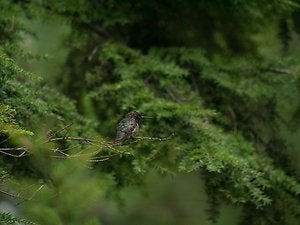Hi.
I've been using the Olympus 75-300mm ii with my EM5 for the past few weeks and I have been struggling taking good photos of more distant objects. I've experimented with a bunch of settings but I've not found a set-up that consistently works. I've taken a lot of photos I like of, say, butterflies 10ft away from me, but very few of (e.g.) a bird near the top of a tree. I think the problem I have is mostly focusing.
I've attached a couple (unedited) photos to illustrate what I mean. The cormorant in the first is a good example of what tends to happen in my photos at this range: it is not sharp. The second is better but still I feel it's not sharp enough either, particularly the head. It's not, for instance, a photo I could print out and appreciate -- irrespective of its artistic merit -- because the bird doesn't have enough detail.
I'm not sure if I'm expecting too much from this lens, but then I have looked at other users' images on the showcase thread and they're often very good at are comparable distances. If anyone could give me some tips or a good set-up for using this lens, or even look at my photos and see where I'm going wrong, I'd be very grateful.


I've been using the Olympus 75-300mm ii with my EM5 for the past few weeks and I have been struggling taking good photos of more distant objects. I've experimented with a bunch of settings but I've not found a set-up that consistently works. I've taken a lot of photos I like of, say, butterflies 10ft away from me, but very few of (e.g.) a bird near the top of a tree. I think the problem I have is mostly focusing.
I've attached a couple (unedited) photos to illustrate what I mean. The cormorant in the first is a good example of what tends to happen in my photos at this range: it is not sharp. The second is better but still I feel it's not sharp enough either, particularly the head. It's not, for instance, a photo I could print out and appreciate -- irrespective of its artistic merit -- because the bird doesn't have enough detail.
I'm not sure if I'm expecting too much from this lens, but then I have looked at other users' images on the showcase thread and they're often very good at are comparable distances. If anyone could give me some tips or a good set-up for using this lens, or even look at my photos and see where I'm going wrong, I'd be very grateful.

Subscribe to see EXIF info for this image (if available)

Subscribe to see EXIF info for this image (if available)
Last edited:

